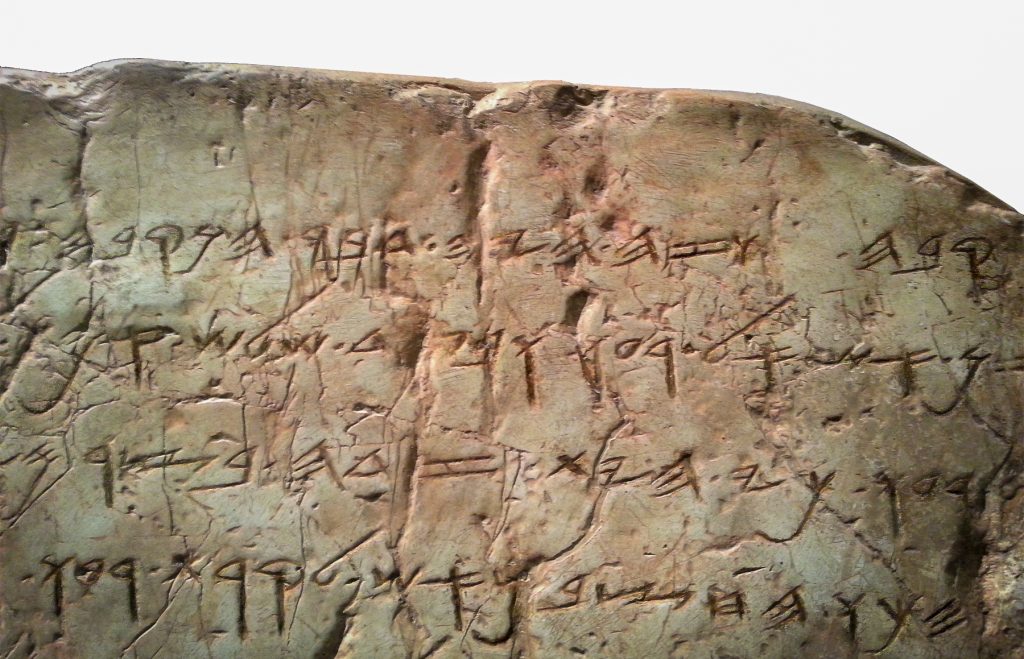An ancient paleo Hebrew inscription was discovered in Hezekiah’s tunnel that gives a clear historical record of how the underground aqueduct was excavated. The Siloam Inscription, or Shiloah Inscription, was etched into the rock wall of the tunnel to describe the method by which the aqueduct was quarried. That in support of the biblical account of 2 Kings 20:20, workers thousands of years ago dug through each end of the tunnel to meet at about its center. In so doing, they navigated toward one another while digging until their breakthrough in the rock to each other. With pickaxes striking the rock wall and while calling out to one another, workers from each end dug in a coherent direction until they met together to completely open the water channel from Gihon spring to the Siloam Pool.
With successive approximation, as they dug through the tunnel’s rock walls, there were some false starts that required course correction. This is made evident from a close look at the tunnel wall contour and shallow cut-away sections of the tunnel that appear abandoned. While adjusted and continued digging advanced toward each end with reduced time and effort, workers called to one another as a sort of sounding beacon to remain on course or to return on course as necessary.
The ancient inscription translated to English reads as follows to detail the method of the dig.

The Siloam Inscription
“Behold the tunnel. This is the story of its cutting. While the miners swung their picks, one towards the other, and when there remained only 3 cubits to cut, the voices calling to his fellow was heard – for there was a resonance in the rock coming from both north and south. So the day they broke through the miners struck, one against the other, pick against pick, and the water flowed from the spring towards the pool, 1200 cubits. The height of the rock above the head of the miners was 100 cubits.” – Translation by E. Puech [1]
With a total excavation distance of 1,750 feet, there are questions that naturally surface about what additional methods Hezekiah applied to accomplish the dig. Such as how they brought light into the tunnel, how rock debris was removed and how their axes were sharpened to drive through the tunnel. However, while their objective was to reroute the spring water from outside the city walls to within the city, Hezekiah’s leadership and support for the LORD’s people was an example of his character and stature before God. He brought living water through the living rock and overcame a seemingly insurmountable obstacle during a time of duress. That with determination and persistence, he laid preparation for a siege by the Assyrians at the time of King Sennacherib. He brought living water through the living rock to help assure the well-being and continued survival of the LORD’s people.
[1] Jerome Murphy-O’Connor, The Holy Land, An Oxford Archaeological Guide 5th Edition
(Oxford U.K., Oxford University Press) 128












